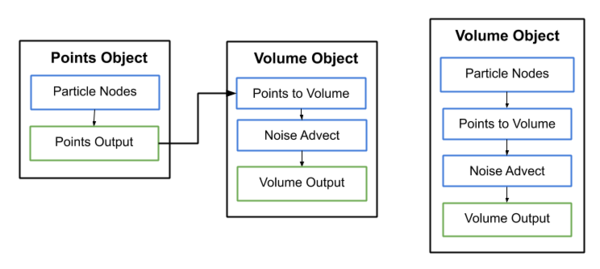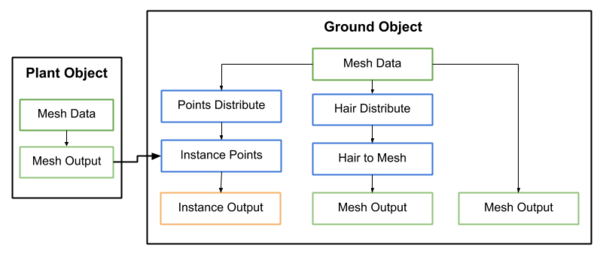User:Brecht/Proposals/New Object Types
< User:Brecht | Proposals
Proposal: New Object Types
NOTE: this is an outdated proposal that was largely implemented, and there are specific code documentation pages with detail about the actual implementation.
For more powerful procedural workflows and more clear design, we should add 3 new object types.
Hair
Hair should be a system separate from the current particle system.
It would work like this:
- Hair datablock similar to Mesh, containing hair curves and curve keys.
- Object type hair that uses this datablock, which can be selected, hidden, duplicated, instanced, etc.
- Hair objects would link to a mesh object to position hair on.
- Edit mode would be similar to edit modes for other object types.
- Hair objects would have modifiers. These would serve various purposes:
- Create an initial distribution of hair on a mesh, which is then applied for editing.
- Generate child hairs.
- Add curls or any other deformation.
- Physics simulation modifiers, again similar to meshes.
- Rendered directly as hair by Cycles and Eevee.
- Instancing objects along hair could be supported too, similar to instancing for verts/faces.
Modifiers could be implemented as nodes that have hair datablocks as input and output.
With child hair generation being just another modifier, users would have the choice to apply physics and deformations before and/or after.
Reading hair from Alembic caches would also be straightforward in this design.
Point Cloud
Particles would be split off from mesh objects too. For basic particle simulation the output could be a point cloud. This would mean:
- PointCloud datablock with a list of points and custom data layers for velocity, rotation, color, etc.
- Object type point cloud, which can be selected, hidden, duplicated, instanced, etc.
- Cycles and Eevee would ideally be able to render such points directly with little memory usage.
In most cases procedural particle nodes would generate the point cloud completely, without the need for a user created point cloud datablock.
Applying modifiers for manual editing or loading point clouds from external files could be possible too. We can think of 3D scans or objects like sand. But the first priority would be as the default output data type for particles.
Volume
Volumes are currently generated through the smoke modifier on meshes, but really need their own data type too.
We can image many types of volumes:
- Smoke simulation domain object.
- OpenVDB file sequence from disk.
- Procedurally generated volume with nodes.
Again we would have a volume datablock and object type. There could be modifiers and nodes for loading volume data from disk, smoke simulation, deformation, adding high resolution detail, etc.
An edit mode to manually sculpt volume shapes would be powerful, but like particles the first priority would be procedural generation.
The underlying data structure could be OpenVDB, as this is already an optimized representation and the library comes with many useful operations that can be turned into nodes.
Relations
By linking together different objects we can potentially do many interesting effects.
- Particle emission from one or more mesh objects.
- Particle emission from other particle objects.
- Mesh generated from fluid particles.
- Volume clouds modeled with a mesh.
- Hair generated from mesh shape.
The simplest way to do this would be to require creating an object for each data type. Nodes on each object would have the same type of input and output datablock. This fits well in the existing design, and in many cases is most convenient. However for more procedural system we might want something more flexible.
Multiple Outputs and Changing Types
The Geometry Nodes system now implements ways to define relations and convert between these object types.
A flexible node system could for example turn a mesh object into a volume after evaluation. Or one object might output multiple other objects with arbitrary types. Maybe the number of output objects would be dynamically determined.
To what extent this should be supported would be for another design document to delve into. This is both a technical and usability challenge. It may be best to leave this as a later step, after initial new object types and nodes are implemented.
This was implemented in the form of Geometry Sets as part of the geometry nodes project.


